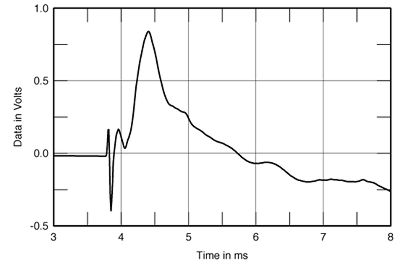| Columns Retired Columns & Blogs |
Joseph Audio RM7si loudspeaker Signature Measurements part 2
Figs.5 and 6 show the RM7si Signature's horizontal dispersion, both the actual responses (fig.5) and the differences in response (fig.6). It is easier to see from the latter that there is an off-axis flare in the same region where the on-axis output has a depression. In a typical room, these will tend to compensate for one another, resulting in a perceived balance that is closer to flat. In the vertical plane (fig.7), suckouts develop in the crossover region more than 15 degrees above or below the tweeter axis. This is quite a window, presumably due to the minimal overlap between the drive-units. The speaker will be relatively unfussy when it comes to stand height.

Fig.5 Joseph RM7si Signature, lateral response family at 50", from back to front: responses 90 degrees-5 degrees off-axis, reference response on tweeter axis, responses 5 degrees-90 degrees off-axis.

Fig.6 Joseph RM7si Signature, lateral response family at 50", normalized to response on tweeter axis, from back to front: differences in response 90 degrees-5 degrees off-axis, reference response, differences in response 5 degrees-90 degrees off-axis.

Fig.7 Joseph RM7si Signature, vertical response family at 50", normalized to response on tweeter axis, from back to front: differences in response 45 degrees-5 degrees above axis, reference response, differences in response 5 degrees-45 degrees below axis.
Apparent in all of these dispersion graphs is the tweeter's limited off-axis output above 10kHz. In well-furnished or relatively large rooms, the RM7si's top octave will sound reticent, as indeed I found in my own auditioning. Fig.8 shows the Joseph's spatially averaged response in my Santa Fe listening room. Note that the output through the mid-treble is superbly flat (as was the regular '7si), revealing that the on- and off-axis behavior does compensate in the manner I suggested. But note also that the in-room output drops off quite rapidly above 10kHz.

Fig.8 Joseph RM7si Signature, spatially averaged, 1/3-octave, free-field response in JA's listening room.
Though both drive-units appear to be connected with positive acoustic polarity, the Joseph's step response (fig.9) is clearly not time-coherent, a side-effect of the crossover topology. The waterfall plot on the tweeter axis at 50" (fig.10) is very clean throughout the tweeter's passband, but there is a distinct "knee" in the graph at the top of the woofer's passband. This might contribute to the narrow-band brightness I occasionally noted in my auditioning.—John Atkinson

Fig.9 Joseph RM7si Signature, on-axis step response at 50" (5ms time window, 30kHz bandwidth).

Fig.10 Joseph RM7si Signature, cumulative spectral-decay plot at 50" (0.15ms risetime).
- Log in or register to post comments




































